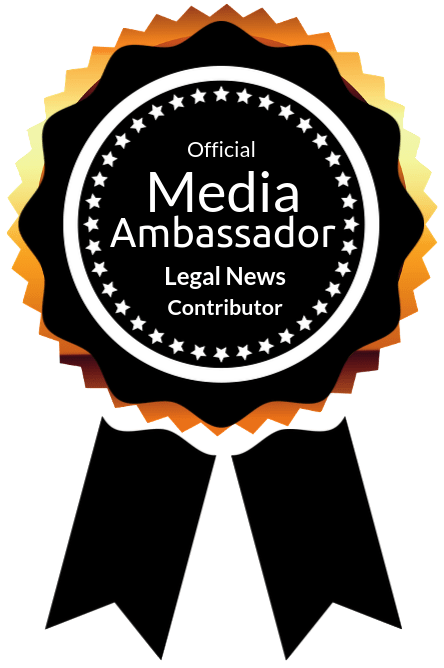[00:00:00] Introduction to the Podcast
Voice-Over: Welcome to the “From Lab to Patient, Garage to Market” podcast with your host, Phil Crowley. In each episode, we will discuss professionals serving the tech startup market and the various issues of importance to those companies. You can find this show on all the major platforms, including YouTube, LinkedIn, Facebook, Apple Podcasts, Spotify, and on our website, CrowleyLawLLC.com. Now here’s the host of “From Lab to Patient, Garage to Market,” Phil Crowley.
Meet Richard Gearhart: IP Law Expert
Phil Crowley: Welcome and thanks for joining us today. I’m delighted to have as my guest, my friend and colleague, Richard Gearhart. Richard is the primary actor on a wonderful radio program on WOR radio in New York, “Passage to Profit,” and has had a distinguished career in IP law, beginning in a law firm and then moving over to responsible jobs as head of intellectual property law for a number of corporations. And then almost 20 years ago, starting his own boutique firm that services inventors, small companies, and people who have valuable intellectual property that they need to protect. And so I thought it would be useful for our audience to hear from an expert in this area about some of the issues that arise for small companies and larger companies as well with respect to generating intellectual property, protecting intellectual property, and converting intellectual property into dollars, which is what a business is all about. Richard, welcome. Thank you so much for joining us today.
Richard Gearhart: Well, thank you, Phil. It’s really great to be here, and I’ve been looking forward to this, so thanks so much.
Phil Crowley: Well, Richard, the practice of law is very wide, and you have chosen a particular niche in law, dealing with intellectual property. How did you choose that? Why did you choose that?
Richard’s Journey into Intellectual Property Law
Richard Gearhart: Oh, that’s a great question, and it’s one that I enjoy answering, so I’m glad you asked it. I graduated from law school, not really sure what kind of law I wanted to practice, and I ended up going overseas to Switzerland and working for the big law firm Jones Day, Revis, and Pogue. They had a Swiss office, and I was also interested in international law, so I applied for admission to the Graduate Institute of International Studies in Geneva, Switzerland. And so, I sort of clerked at Jones Day while I went to school and got this degree in international law. And while I was there at Jones Day, I did corporate deals and international litigation. Those were interesting topics, but I ended up coming back to the United States for personal reasons. And I had a chemistry degree, so I took a job at a small patent boutique firm in Chicago, Illinois. I was living with my parents at the time and I just fell in love with intellectual property law. It just turned out to be my thing and really gelled after a couple of weeks. I knew that this was going to be my topic. And so it fit well with my technical background. But I also liked all the different things that you could do with intellectual property law. There were international issues. You could work for the government, you could work for a corporation, you could work in private practice. There were different types of technologies involved. The law was always evolving. And so for me, there seemed like a lot of different avenues to approach, and that’s why I got interested in it. And you know, that was like 40 years ago, and I really haven’t thought of doing anything different since. I’ve really enjoyed the practice and even after all this time, I still learn something new every day, which makes the practice especially interesting.
Phil Crowley: Well, Richard, you are one of those fortunate people who love what you do, and it’s not a burden to be going into the office and working on things.
Understanding Patents: Myths and Realities
Phil Crowley: Many of our clients and potential clients have wonderful inventions that they’d like to bring forward and commercialize. And one question that I frequently get from entrepreneurs is, well, I want to get a patent because, once I get a patent, that will guarantee that I’ll be able to make and sell my product and prevent others from making and selling it. Isn’t that the totality of what you get? Are there any fallacies in part of that?
Richard Gearhart: Yeah, I think that’s sort of a leading question. I’m an attorney, so I think you already know the answer to that one, Phil, but I’ll do my best to expand on it. Actually, if you have a patent, it doesn’t give you the right to market or commercialize the invention. It gives you the right to stop others from doing it. If their invention falls within the scope of your patent. So, you can stop somebody else from using your invention, but just because you have the patent doesn’t mean that you have the right to commercialize it. So, you also have to comply with all the other regulations and laws associated with commercializing the type of product that you want to commercialize. If you’re in the business of providing an active ingredient or a pharmaceutical preparation or formulation, you still need to get the proper government approvals before you can put that on the market. Just having a patent isn’t going to influence that process. It’s also important to appreciate that you don’t necessarily need a patent to commercialize your product. A patent is a business tool, just like any other business tool. It can help protect your market. It’s not going to give you unlimited monopoly, but it will slow down competitors, and sometimes it will completely capture a market for a company. But it’s not necessary in order to put a product out there. What it does do is protect your investment in the technology.
Phil Crowley: And what about situations where there may be some type of superior patent or superior technology that’s been patented that needs to be used in order to make, use, and sell your particular invention? What happens then?
Richard Gearhart: Yeah, well then it becomes a little thorny, right? Because, it’s to have somebody else also have a patent. If they were there first, and if their patent dominates over your patent, you may need their permission to commercialize the technology. So could take the form of a license, for example, whether or not you get a license can depend on a lot of factors. If you’re going to directly compete with the company that has the dominant patent, they may not be too enthusiastic about granting you a license. On the other hand, if it’s a patent that’s just kind of sitting around and not really supporting anything that they’re doing, it may be that they grant a license, but you want to understand these issues early in the game and hopefully before you put huge amounts of money into R&D, because you want to be able to know if there’s somebody else that has patents in your area. So, it’s very important that at an early stage of research, you do your due diligence and do a thorough job of patent searching to ensure that you’re going to have freedom to operate. That means that you’re going to be able to go out into the commercial world and sell your product without having to worry too much about somebody else filing a patent lawsuit against you. It’s very important for entrepreneurs to understand that whatever type of product you’re using, whether it’s software, life sciences, or consumer products, you do research at an early stage and determine one that the product is protectable. You may decide to file a patent and two, to make sure that you’re not running into somebody else’s patent that could block you.
Phil Crowley: That sounds like what I’ve heard to be a freedom to operate, as you were saying, Richard, a freedom to operate analysis. It seems to me that the prudent entrepreneur and inventor will involve their patent counsel early in the process to understand what the lay of the land is and to try to avoid those areas that may be foreclosed because of patents that other people hold.
Richard Gearhart: Right. And, that’s not to say, I mean, we do a lot of searches at Gearhart Law for different kinds of products. I would say, roughly a third of the searches we do knock out the idea, right? So, about a third of those searches we do, we go back to the client and say, well, the invention in this form is not patentable. And, some percentage of those are going to be active patents that could be problematic for your commercialization. So, there’s a fairly high percentage of projects out there that could potentially run into patent problems. That doesn’t mean it’s the end of your project. It means that you may need to strategize to get around the patent, or maybe you can hire a law firm to come up with an opinion that suggests that the patent may be weak. The patent that could block you may be weak or maybe even invalid, right? And then you can make intelligent decisions about how to move forward. It’s not, I think people who are skeptical of the patent process are taking a risk. Usually, the costs associated with doing this research are relatively minor compared to the investment that they’re going to make in their business. So, it’s good to have an insurance policy early on in the process. So, you can know what the limits are, what other people are doing, and you can also move forward and make an investment in the project without fear that you’re going to get hit with a lawsuit or a cease-and-desist letter later.
Phil Crowley: Well, it sounds like the Patent Counsel can also be a strategic partner, and I know that sometimes, entrepreneurs and business people have the feeling that they only bring the lawyer in at the last moment, but it sounds like there’s a role for Patent Counsel to perhaps strategize with the inventors about how to avoid what sorts of changes might be possible to not infringe something. Could you explain a little bit about how that works for our audience?
Richard Gearhart: Sure. At Gearhart Law, we treat our clients like partners and we try to understand what’s going on in their business. We try to understand the research plan, the plan going forward, whether you’re planning to get investment, what would be the potential exit strategy, all of those things that could play into how the patent portfolio works. Are you partnering with somebody else? Are there going to be issues of joint inventorship where both parties may have a claim to the intellectual property? All of that stuff needs to be thought through and talked about. It can affect how you file the patents when you file the patents and what the scope of the patent coverage is. For example, you may have a great technology now and you may have great ideas for future developments. The question is, do you put that information in the first patent or do you wait a while and put it in a second patent? Because you want the filing date as early as you can get. But if the technology’s not well developed, then maybe it’s better to wait. All of those factors have to be considered to get the best possible intellectual property protection.
Phil Crowley: All right, that was a great description of aspects of the patent strategy process. I’d like to take a pause here for just a moment and explain a little bit about Crowley Law. We are a boutique law firm focused on helping life sciences and other technology entrepreneurs realize their dreams to take great ideas from the laboratory bench to the patient’s bedside or from the garage to the marketplace to enrich the lives of thousands or even millions of people. I’m a former physicist who decided to pursue law. I have a great appreciation and respect for the hard work that goes into creating new ideas, creating new products and services. I have a great desire, both for myself and the rest of my team, to protect the interests of founders and those who work in these highly innovative companies in dealing with vendors, financing sources, and other strategic partners. If you are one of those entrepreneurs, please visit our website CrowleyLawLLC.com and take a look at the free resources available there, including an ebook that seems to be pretty popular called “The Top Ten Causes of Failure of Technology Startups and How to Avoid Them.” That’s a free resource. If you have issues, please contact us at [email protected] and arrange for a complimentary consultation with a member of our team. We’re here to help. Thank you.
International Patent Strategies
Phil Crowley: Richard, let’s get back to the strategic process of deciding what to patent and where to patent. What are the basic rules about what you can patent?
Richard Gearhart: Well, really you can patent just about anything. Many of your viewers will probably appreciate that it has to be novel. It has to be new. It has to be non-obvious. It has to be useful. It has to be patent-eligible, which means that it can’t be found in nature or it can’t be a mathematical algorithm. But other than that, most things are protectable. Especially in the life sciences sphere, you have active ingredients, formulations, processes, methods of making and methods of using. Outside the United States, some of those claim forms or types of patents are less available. But you can really protect just about anything. What you’re obviously looking to do is to protect something that gives you a competitive advantage. You don’t want to be filing patents just for the sake of filing patents. You want to be filing on ideas that are going to have commercial value. Sometimes something as simple as the right recipe for cooking your “goop” can be protected and it can be valuable. You also need to consider maintaining trade secrets too. Not everything always has to be protected with a patent because when you file the patent, you disclose the technology to the world. There are a lot of companies that keep their manufacturing processes secret, and they hope that they can maintain those secrets. The nice thing about trade secrets is that you can keep them indefinitely, whereas with patents, you have a 20-year term and that’s about it.
Phil Crowley: The idea of trade secrets people would think of the recipe for Coca-Cola, which has remained a secret since the 1880s, and the ability of developers of software as a service type of businesses to keep the software that runs things in their hands behind the scenes on their servers. They have a beautiful graphical user interface that people interact with, and they never get to touch the secret sauce, so to speak, but they do get the results of that. They can do that. People sometimes forget that patents are creatures of national law. To your point, if you get a patent on something in the United States and don’t file outside the United States, then people outside the United States are free to use your idea. One of the requirements of obtaining a patent is to describe for someone who is reasonably skilled in the art what you did. So, you’re telling the world how to do things. I’m sure you’ve been involved in many discussions with entrepreneurs about what, not only what to patent but where to patent. How is that decision made?
Richard Gearhart: Well, there are a couple of principles to keep in mind when you’re having that discussion. The first one is that patent portfolios, international patent portfolios can be expensive because as you mentioned, patents are national rights. So, what has to happen is that a patent attorney or a patent firm has to be hired in each country where you want to obtain protection and you have to start the whole process with them. The application can be drafted and filed in one country and then that text can be taken and refiled in different countries. But if you’re filing in China, that application has to be translated into Chinese. Or if you’re filing in Brazil, it has to be translated into Portuguese. You can file in the EU in English. Canada is English, Mexico, you have to translate it into Spanish. If you have larger applications, this can work out to be quite an expense. Because there’s expense associated with international filings, there is a protocol called the Patent Cooperation Treaty that allows you to defer filing in each of these countries for a period of 30 months from the first filing. So, if I were to file a patent on January 1st, 2025, I would have 30 months from that date to file in all of these other countries. You pay a fee for that option to extend the filing date. That gives you time to see how the technology is going, whether there’s a market for it or other interest. That way you can defer the international filing costs for a substantial period. If you’re an entrepreneur looking for investor funding or some sort of licensing deal, that’s a pretty good way to go because you don’t necessarily want to have to put up an additional 30, 40, 50, 100 thousand dollars in an international portfolio if there’s not enough interest in the product to justify it. Part of it is the cost. Another part of it is where do you file, right? You have to know where your product is going to be made and where it’s going to be sold. There are just no appeal. I remember a client who had a deer repellent patent in Switzerland. And I said, well, do they have a problem with deer? And she looked it up and she came back to me and said, no, they don’t. I said, well, who’s going to buy it in Switzerland then? Maybe that’s a little bit superficial approach, but the point is, where is it going to be sold? And then the other part of it is where is it going to be made? So, for example, if you’re a consumer products inventor, maybe just filing in China where it’s being manufactured is enough because Chinese patents aren’t super expensive. And if somebody is going to try to knock you off, they’re probably going to make it in China. That at least gives you something to fight with over there, as opposed to trying to protect the technology in every country in the world. So, there are different strategies. When I worked for large companies, if we had a competitor, maybe in Germany, for example, that had a lot of manufacturing facilities for our types of products, we would file in Germany because we wanted to avail ourselves of the German courts if they were making an infringing product. Maybe that’s a little bit smarter because maybe they’re selling it to Russia or maybe they’re selling it to some other country in Latin America where we can’t really get strong patent protection. Then the avenue is to approach the German courts, which are rock solid when it comes to enforcing intellectual property rights.
Phil Crowley: It sounds like there’s a lot of planning that goes into creating a patent portfolio. Not only when do you file, but what you file on and also where you file to conserve cash.
Common Mistakes and Final Thoughts
Phil Crowley: I’d like to also discuss some of the mistakes you’ve seen that young companies and entrepreneurs make that can delay or even defeat their ability to obtain patent protection. One case that comes to mind is where a professor at a university, because universities are publish or perish, so they’re oriented towards publishing things. They may publish something, and typically that puts it in the public domain, but are all their options foreclosed?
Richard Gearhart: Well, it doesn’t help when that happens. If there is a publication, an errant publication, and the university decides that they want to protect it, it becomes a matter of analyzing what’s in the publication. Then seeing if there’s any subject matter or knowledge associated with the invention that wasn’t in the publication and then doing our best to file an application. If we are able to obtain notice about the publication soon enough, we would have one year from the date of the publication to file a patent in the United States. Typically, other countries don’t have the one-year grace period. So, it would make it a challenge to get the intellectual property allowed outside the United States. For example, China and Europe both have absolute novelty countries. So, if there was a publication before the application was filed, then you could have some serious troubles. Publishing the technology is not good. You normally would want it. I mean, it’s good, but it’s not good for the patents. I would suggest consulting with a patent counsel before that happens, if it’s possible. Another place where inventors get tripped up is they don’t do a search. They end up spending a lot of time and money developing a product that is effectively not protectable. They go out to commercialize it. If it can be copied, then a competitor can copy it. The competitor that copies it doesn’t have to make the investment in the R&D to develop it, so their cost structure is usually better than the inventors’, and so you can lose out that way.
Phil Crowley: Richard, that brings to mind the ads that I see on the internet where firms will say we file a patent application for you for five hundred dollars. But it seems to me that, that type of approach, while it may conserve cash, may have some terrible problems down the road and doesn’t really get the expertise of a firm like yours to think through the process of creating claims in the patent that protect not just the specific device or product or service, but foreclose other avenues of designing around the product that you initially come up with.
Richard Gearhart: Yeah. I mean, that’s a great point. Every once in a while, we’ll meet an inventor who’s used the service, and for whatever reason they’re dissatisfied. It takes years of training and, you know, you have to pass at least one very difficult exam, which is the patent bar exam. It takes years of training to know how to do this right now. People who invest in that kind of training want to be paid reasonably, right, commensurate with that. If you want to take advantage of that experience, it’s going to cost more money, but you’re going to reduce your risk. It’s always a matter of whether you can completely bypass the I.P. process, but you’re taking a certain amount of risk. If you hire a firm and you have eight attorneys working on your patent, you’re probably going to minimize the risk, but it’s going to be very, very expensive because you have a lot of people devoting their time to it. For entrepreneurs, Gerhardt Law is usually a pretty good, sweet spot because we’ll have one or two attorneys working on it, reviewing it, who are experienced. Past results are not predictive of future results, but we have a good track record with getting patents granted. Spending 500 on a patent application that never gets granted is a waste of 500. You need to look at not what your initial costs are, but what is the end product and what is the value for you. If a patent costs between 15 and 20,000 all the way in, you have to evaluate that against your potential market size and the life cycle of your business. If the product is going to be out there for 10 years and you’re planning to achieve 150,000 in sales, which is pretty low, but let’s just say an average of 150,000 in sales, 20,000 to protect that investment probably makes sense. If your anticipated sales are, you know, 50,000 over the lifetime of the product, then spending 20,000 on a patent is probably not a great business decision for you. But even if the patent just stops a competitor for six months, if you’re talking about 100,000 a year in sales, which again is really not that much, but you say 50,000 in sales because they had to spend six months designing around your patent before they could launch, then the patent has paid for itself. You might not necessarily know that because they’re talking with their patent attorney and that’s a privileged relationship. But from my point of view, I see that all the time, and I see how other people’s patents are hurdles to commercialization.
Phil Crowley: I think we’re just about out of time. This is fascinating. I’m sure we could go on for much longer than we have, but how can people get in touch with you if they’d like to access your expertise?
Richard Gearhart: I can be found at Gearhart Law and that’s spelled G E A R H A R T, just like you see on my lower third there. It’s GearhartLaw.com. We give free consultations. We’re always interested in talking with entrepreneurs and our goal is to help anyone who wants to start a business.
Phil Crowley: Super Richard. Richard, thank you again for sharing your expertise today. I think this is really valuable information for our entrepreneurs and inventors out there. I’d like to thank you for this and also thank our viewers for tuning in to this session. Thanks very much.







